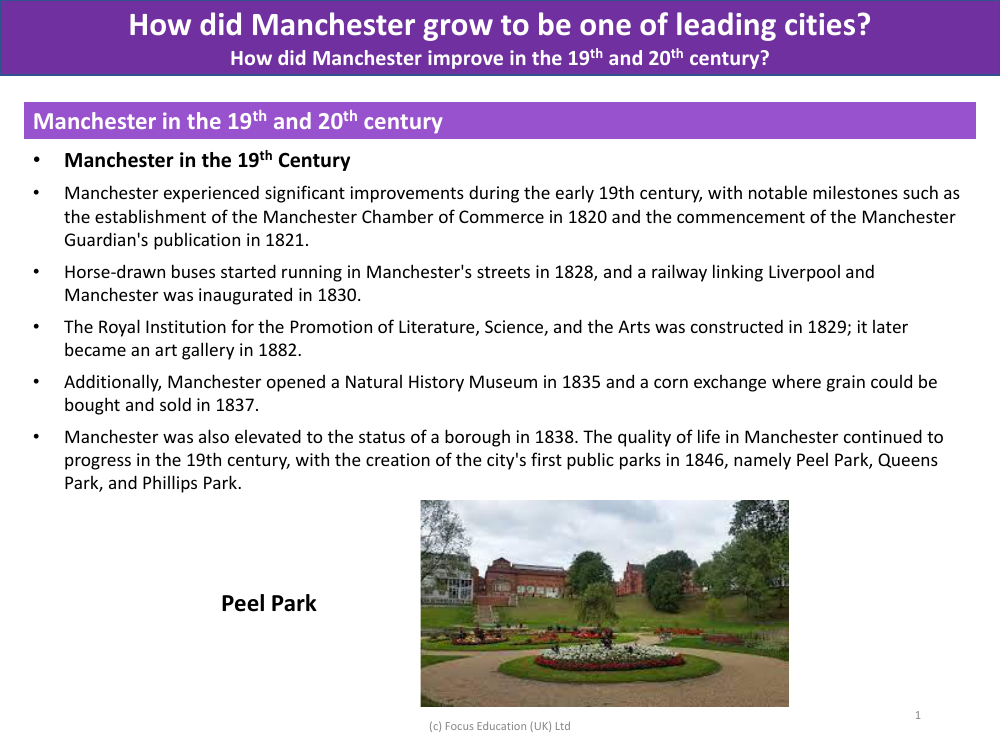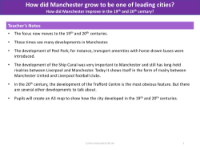Manchester in the 19th and 20th centuries - Info pack

History Resource Description
Manchester's transformation during the 19th century was marked by a series of significant advancements that shaped its growth into a leading city. The establishment of the Manchester Chamber of Commerce in 1820 and the first publication of the Manchester Guardian in 1821 were early indicators of the city's burgeoning influence. The introduction of horse-drawn buses in 1828 and the opening of the railway linking it to Liverpool in 1830 revolutionised local transport. Cultural and educational developments were also prominent, with the Royal Institution, later an art gallery, founded in 1829, and the opening of a Natural History Museum in 1835. Manchester's status was elevated to that of a borough in 1838, and it saw the creation of its first public parks in 1846, further enhancing the quality of life for its residents.
Entering the 20th century, Manchester continued to evolve and adapt to changing times. The John Rylands Library opened in 1900, and the founding of Manchester University in 1903 signified the city's commitment to education. Despite challenges such as the decline of traditional industries like cotton during the Great Depression, the city experienced a resurgence during World War II. The latter half of the century witnessed a shift from manufacturing to service industries, with tourism becoming increasingly important, highlighted by the openings of the Museum of Science and Industry and the Museum of Transport. The construction of the Arndale Centre and the introduction of Metrolink trams were notable milestones, and even after the IRA bombings in 1996, Manchester demonstrated resilience, rebuilding and modernising with developments like the Trafford Shopping Centre.



